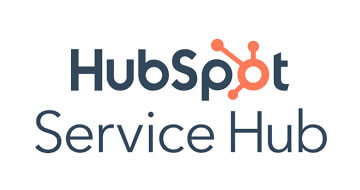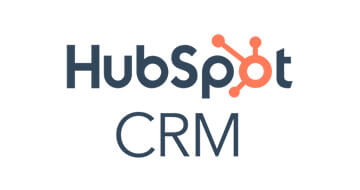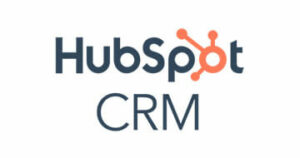Hubspot CRM Pricing Overview
Although Hubspot is most famous for its Marketing Hub, the platform is an all-encompassing system that also includes an integrated sales CRM. Like any Hub on the platform, you can bundle it with other products or choose not to use it at all.
We’d recommend you opt for the former as Hubspot’s Sales Hub is a comprehensive sales CRM that allows you to automate your processes and manage your sales teams with ease and efficiency. Hubspot offers sales CRM solutions for businesses of all sizes and a solid integration with other Hub products on the platform.
This article lays out the pricing, features, pros, cons, and hidden costs for all Hubspot Sales Hub pricing tiers.
| Hubspot Sales Hub Pros | Hubspot Sales Hub Cons |
|---|---|
 | Want to know more about Hubspot Sales Hub? Explore the Hubspot Sales Hub review page to know more about its features, pros and cons, support, alternatives and many more |
Hubspot Sales Hub Pricing Plans
Each pricing plan reflects numbers in US dollars. Hubspot has location-based pricing that we list in the Location-Based Pricing section below.
| Price Tier | Price | Number of Users |
| Starter | Monthly – $50/month Annual – $23/month, $540/year | 2 |
| Professional | Monthly – $450/month Annual – $5,400/year | 5 |
| Enterprise | Monthly – N/A Annual – $1,200/month, $14,400/year | 10 |
Value Metrics
| Price Tier | Free | Starter | Professional | Enterprise |
| Features Listed | 20 | 24 | 56 | 71 |
| Cost per Features Listed | $0.00 | $1.88 | $14.29 | $45.07 |
Factors to Consider
| Price | The Free and Starter tiers are relatively cost efficient, but larger teams will see the limitations quickly. And it’s expensive to make the jump to the Professional and Enterprise tiers. |
| Number of users | Your number of users determines your price. You’ll need to determine how many ‘users’ you need and how many on your team only need the ‘free’ tools. More on this in the section below. |
| Features | Though they have limitations, Sales Hub offers an impressive portfolio of features. |
| Scalability | No matter the size and needs of your business, you’ll be able to step up the usability ladder with ease. |
| Ease of use | All products on the platform work seamlessly on Hubspot’s proprietary interface that’s super-easy to use. |

Did you know about Hubspot’s Free Tools?
With your first look at Hubspot pricing, you may know what tier will work for your organization. But before you decide, test the entire platform. Hubspot offers Free tools, forever, and doesn’t require a credit card to sign up.
Hubspot Sales Hub Pricing Plans First Look
Hubspot’s pricing page looks complex at first glance. For this pricing breakdown, we’re looking at Sales Hub, which has three paid tiers.
- Starter
- Professional
- Enterprise
The price increases with each tier based on the number of ‘users’ and additional features you desire. Also, Hubspot requires you pay and use their onboarding service at the Professional and Enterprise levels. More on that below.
Here’s everything you need to know about Sales Hub pricing, including:
- What is and isn’t included under each plan and pricing tier
- Pros and Cons
- Key upgradeable features
| Pricing Plan | Who is it for? |
|---|---|
| Free | Anyone looking to test the platform. |
| Starter | Solopreneurs and single-team enterprises. |
| Professional | An SMB with a healthy cash flow. |
| Enterprise | Larger enterprises with an active sales division. |
Hubspot Sales Hub Free Tools
Before we review Hubspot’s paid plans and their extensive feature adds, know that Hubspot offers a ton of business tools for free under each of their five products. You won’t be able to remove the Hubspot branding, but it’s a great option for anyone looking to test the platform.
Here are the free tools available through Sales Hub:
- Live chat
- Basic bots
- Team email
- Customizable quotes
- Email scheduling
- Email tracking & notifications – 200 notifications per month
- Shared inbox – 1 inbox
- Canned snippets – 5 total
- Documents
- Meeting scheduling
- Reporting dashboard – Up to 3 dashboards, each with 10 reports per dashboard
- Deal pipeline – one per account
- Facebook Messenger integration – limited features
- Custom properties – 10 total
- HubSpot mobile app
- Marketing events object
- Email reply tracking
- Slack integration
- Email health reporting
- 1-to-1 email
- User management
- Custom user permissions
- Email templates
- Contact website activity
- Gmail, Outlook, and Microsoft Exchange integrations
- App Marketplace integrations
- Custom support form fields
- Prospects
- Contact management
- List segmentation – 5 active lists and 1,000 static lists
Paid user features vs. available-to-all features
Hubspot allows you to have a certain number of paid users within each pricing tier. And if you need more users, it’s possible to add more without bumping up to the next payment tier.
In each section below, we list out the feature differences between paid users and users so you can make a better decision about which tier is best for you.
Sales Hub Starter Plan
The Starter plan includes the free tools listed earlier and adds:
Hubspot branding erased from
- Live chat
- Meeting scheduling
- Documents
- 1-to-1 email
B2B purchasing
- Payments(U.S. only)
Sales process streamlining and organization
- Conversation routing
- Repeating tasks and task queues
- Multiple currencies
- Stripe integration
- Calling SDK
- Goals
Additional support
- Email and in-app chat support
Other Perks
- Unlimited email tracking notifications
- Increases Canned Snippets, documents, and email templates to 5k
- Adds an additional deal pipeline per account
- 1,000 custom properties per object
- Take ACH payments at 0.5% of the transaction amount, capped at $10 per transaction, and card transactions with a 2.9% fee.
Starter Tier Paid User vs. Free User features
| Paid user features | Free user features |
|---|---|
| Email tracking & notifications | Payments |
| Canned snippets | Multiple currencies |
| Documents | HubSpot-provided phone numbers |
| Meeting scheduling | Calling SDK |
| Email templates | 1:1 technical support |
| Goals | Sales automation |
| Calling | Simple automation |
| Conversation routing | |
| Stripe integration | |
| Repeating tasks and task queues | |
| Task calendar sync |
Hubspot’s Sales Hub Starter tier offers an excellent range of features for both small sales teams and solopreneurs. The plan comes with 2 paid users and it’s possible to add more at $23/month per additional user.
| Pros | Cons |
|---|---|
| Hubspot branding disappears. | Doesn’t give you access to all the reporting features many businesses want. |
| Excellent features to help you organize your sales process. | Adding users is expensive. |
| Additional support never hurts! | No data-based recommendations for email health reporting |
Sales Hub Professional Plan
Includes all free tools and Starter tier features and adds:
Sales team management features
- Sales analytics
- Teams
- Sales automation
- Standard CRM interface configuration
- Required fields
- Custom reporting
- Forecasting
Personalized sales outreach tools
- Sequences
- 1:1 video messaging
- Smart send times
- ABM tools and automation
Expedited pricing and quoting features
- Product library
- Calculated properties
- eSignature
Advanced support features
- Phone support
Other Perks
- Increases number of shared inboxes to 1,000
- 15 deal pipelines per account
- Includes advanced bot branching and advanced reporting for Facebook Messenger
- Includes data-based recommendations for email health reporting
- List Segmentation – 1,000 active lists and 1,000 static lists
- 300 fully customizable workflow
Professional Tier Paid User vs. Free User features
| Paid user features | Free user features |
|---|---|
| All Starter features plus: | Rep productivity performance |
| Sequences | Workflow extensions |
| eSignature | Smart send times |
| Automatic lead rotation | Required fields |
| Forecasting | Custom reporting |
| Account overview | 1:1 video messaging |
| Playbooks | Standard contact scoring |
| Teams | |
| Product library | |
| Calculated properties | |
| Standard CRM interface configuration | |
| Target accounts home | |
| Deal and company scoring | |
| Sales analytics | |
| Logged-in visitor identification | |
| ABM tools and automation | |
| Salesforce integration | |
| Duplicate management | |
| Permission sets | |
| Association labels | |
| Call transcription and coaching |
Larger SMBs require advanced automation and reporting tools to keep their teams running. The Professional tier for Sales Hub provides those key features and more. The plan comes with 5 paid users included, and additional users run $90/month.
| Pros | Cons |
|---|---|
| Sales automation tools are highly effective at helping organize and manage teams. | Could use better reporting features for the price tier. |
| Adds email sequences with templates to help you maximize outreach. | Only 100 custom reports available. |
| eSignature helps you close deals with ease. | Five Playbooks available. |
Sales Hub Enterprise Plan
Includes all free tools, Starter features, and Professional features and adds:
Customized settings for your enterprise
- Custom objects
- Hierarchical teams
- Sandboxes
- Advanced administrative permissions
Scaled coaching and enablement
- Playbooks
- Conversation intelligence
- Predictive lead scoring
Other Perks
- 100 deal pipelines per account
- Ability to use code snippets for custom Facebook Messenger bot actions
- Up to 1,000 fully customizable workflows with the ability to trigger sequences.
- 500 custom reports
- Create up to 5k Playbooks
Enterprise Tier Paid User vs. Free User features
| Paid user features | Free user features |
|---|---|
| All Professional features plus: | All Professional features plus: |
| Conversation intelligence | Salesforce custom object sync |
| Custom objects | |
| Hierarchical teams | |
| Predictive lead scoring | |
| Single sign-on | |
| Recurring revenue tracking | |
| Field-level permissions | |
| Admin notifications management | |
| Sandboxes | |
| Login as another user | |
| Advanced permissions |
If you’re a large Enterprise looking for a top tier sales solution that integrates seamlessly with Marketing Hub, then Enterprise Sales Hub is an excellent tool for your team. It allows you to set up hierarchical teams, and each user can work in multiple pipelines with advanced analytics, automation, and sequencing. The Enterprise tier includes 10 paid users and additional users are $120/month.
| Pros | Cons |
|---|---|
| Solid solutions for enterprises running large sales teams. | Expensive product |
| Custom objects are a game changer for your sales campaigns. | Required mandatory paid onboarding. |
| Coaching features allow you to organize target pitches enmasse. | The reporting features don’t match up to many competitors. |

Try Hubspot Sales Hub now
Hubspot’s Sales Hub has everything you need to run effective sales campaigns, regardless of the size of your business. Ramp up your campaigns or start small and scale efficiently with Sales Hub.
Key upgradable features
Number of Users
Each tier provides a base number of users, but it’s possible to add more users. However, the cost can be significant, so carefully examine who does and doesn’t need the full range of features on a paid user account.
Payments
Obviously, sales teams must be able to take a payment when a customer is ready. You need at least the Starter tier to accept ACH and credit card payments. Your sales team can also make B2B purchases at this tier.
Sales Automation
As you move through the tiers, more automation features will become available to your team. At the Starter level you can only trigger tasks, but the Professional and Enterprise tiers allow you to create fully customizable workflows.
Custom Objects
The Custom Object feature is game changing for both sales and marketing teams and is only available at the Enterprise level. It allows users to structure their data for storage, workflows, and reporting.
Salesforce Integration
Many larger companies already have deep ties to Salesforce and its powerful set of sales analytics tools. However, the platform is costly and can be difficult to learn. Fortunately, Sales Hub offers a seamless Salesforce Integration at the Professional level and above. If your team needs to use both, then upgrading is a easy decision.
Add-ons
API Call Volume
Hubspot Sales Hub only has one add-on available. For $500/month you can increase your API call volume for integrations between Hubspot and other services up to 1 million calls per day.
Hubspot, choosing the right pricing plan

Try a Sales Hub Starter Plan
Just because you’re not a large enterprise yet doesn’t mean you can’t take advantage of Sales Hub’s robust tools set. Their Starter plan allows contractors, solopreneurs, and small teams to manage their sales campaigns effectively and take payments when needed. Plus, it removes Hubspot branding from your sales chats, documents, and emails.
Hidden/Additional Costs
Onboarding
The Professional and Enterprise tiers require that users pay a one time onboarding fee, which is a red flag for many potential Sales Hub customers. However, this policy ensures you and your team fully understand how the platform works and how to get the best value from it.
Here’s the onetime onboarding services fees:
Professional tier Marketing Hub onboarding – $1,000
Enterprise tier Marketing Hub onboarding – $3,000
Auto-renew
The Hubspot system sends notifications, but it’s important to be mindful of your renewal date. Hubspot will auto-renew any contract or monthly payment unless you cancel it in the system.
How to save money when using Hubspot
Sales Hub is expensive for SMBs still working to get things off the ground. To ensure you’re not spending more than necessary, the key factor to look at is the number of individuals on your team who need to use all features under a ‘paid user’ account. Everyone else can use the ‘free tools’
Be sure to review the paid and free user feature lists from the sections above and examine where you can use those ‘paid’ accounts effectively. Don’t add extra users or jump up a tier recklessly.
The Hubspot sales team can provide suggestions, but it’s up to you to monitor and evaluate your user needs.
Startups and Nonprofits
Hubspot also offers discount pricing for Startups and Nonprofits, but you’ll need to go through their application process to receive the discount.

Try a Sales Hub Professional Plan
Scaling SMBs need comprehensive sales solutions to help them organize and run campaigns effectively. Sales Hub provides businesses in this tier with the tools they need to scale effectively. Automate processes and trigger sequences to help convert your leads into repeat customers — all from a single, intuitive platform.
How do I pay for my Sales Hub membership/subscription?
Hubspot accepts all major credit cards and processes payments through Zuora. They will not keep a record of your credit card and always default to Zuora for handling payment security and data storage.
Can I use Sales Hub for Free?
Yes, Hubspot offers a variety of Sales Hub tools with unlimited usage for free — no time limit. And they also rotate offers on 14-day and 30-day trials on other tiers. You’ll have to run Google searches or speak to their sales team to gain access.
Location-based Pricing
Hubspot offers pricing in seven countries besides the US. The previous sections list pricing in US dollars. But it’s possible to find better pricing and additional offers in other currencies. Remember: Hubspot’s onboarding policy and fees still apply and prices vary from country to country.
Hubspot Sales Hub*
| Country | Monthly | Annual | Price in USD |
| Australia | Starter – $76 Professional – $720 Enterprise- N/A | Starter – $68 Professional – $648 Enterprise- $20,760 | Starter – $49.76, $44.52 Professional – $471.19, $424.07 Enterprise – $13,586 |
| Canada | Starter – $65 Professional – $650 Enterprise- N/A | Starter – $59 Professional – $585 Enterprise- $19,200 | Starter – $48.34, $43.88 Professional – $477.87, $430.08 Enterprise – $14,116 |
| Columbia | Starter – COP150K Professional – COP1.5M Enterprise- N/A | Starter – COP135k Professional – COP1.35M Enterprise- COP43.2M | Starter – $34.02, $30.62 Professional – $337.46, $303.71 Enterprise – $9,719 |
| European Union | Starter – €46 Professional – €460 Enterprise – N/A | Starter – €41 Professional – €414 Enterprise – €13,248 | Starter – $45.44, $40.50 Professional – $445.74, $401.16 Enterprise – $12,837 |
| Japan | Starter – ¥6,000 Professional – ¥60,000 Enterprise- N/A | Starter – ¥5,400 Professional – ¥54,000 Enterprise- ¥1,728,000 | Starter – $42.50, $38.25 Professional – $418.48, $376.63 Enterprise – $12,052 |
| Singapore | Starter – S$70 Professional – S$700 Enterprise – N/A | Starter – S$63 Professional – S$630 Enterprise – S$20,160 | Starter – $49.44, $44.49 Professional – $489.55, $440.60 Enterprise – $14,099 |
| United Kingdom | Starter – £42 Professional – £410 Enterprise – N/A | Starter – £38 Professional – £369 Enterprise – £11,880 | Starter – $47.64, $43.08 Professional – $444.76, $400.29 Enterprise – $12,887 |
*Pricing updated September 24, 2022

Try a monthly pricing plan now!
Hubspot offers monthly and annual pricing options. Even if you don’t want to get locked into an annual contract, your business has the flexibility to use this outstanding sales platform.
Hubspot Pricing vs Competitors
Potential alternatives
Salesforce
Many draw comparisons between Salesforce and Hubspot because they’re both CRMs. However, there are stark differences between the two platforms that make them almost ‘night and day’ when put side by side.
While Hubspot has a full breadth of CRM services including Customer Service and Sales, it’s most widely known for its Marketing Hub. The platform is an innovator for inbound marketing. Because of this, many companies opt to only use this product and go with other platforms for sales and customer service.
Salesforce lives up to its name. It provides deep analytics and sales forecasting for the sales side of things. The platform is complex, has a steep learning curve, is more expensive than Hubspot, and generally reserved for mid-to-large enterprises.
| Salesforce | Hubspot |
|---|---|
| Pros | Pros |
| Advanced sales forecasting and lead management tools | Advanced marketing and lead generation tools |
| Loads of customization features that sales teams love | Lower learning curve than Salesforce |
| Industry leading analytics | Easy-to-use interface that, with a little training, anyone can pick up |
| Per-user pricing plans | Offers a free tier |
| Cons | Cons |
| High learning curve to utilize the platform | Lower price tag than Salesforce, but still expensive for Premium tiers |
| No free tier | Paid onboarding is mandatory for higher tier plans |
| High price tag | Lacks the depth of resources provided by Salesforce |
| Marketing features are priced individually |
Freshsales
Freshsales is a product under the Freshworks CRM umbrella that offers many similar features to Hubspot’s Sales Hub and more. Users widely regard the platform for its AI assistance and automation features that can help you manage sales campaigns with ease. It will even auto-assign leads based on who is most capable of handling it.
On the other hand, Hubspot offers a full-cycle of conversion, sales, and analytics features that integrate seamlessly with other products on its platform. Even at the starter level, it’s possible to organize and manage highly targeted sales campaigns. And at the Professional and Enterprise levels, you’ll be able to automate most processes and unleash the full power of the platform.
| Freshsales | Hubspot |
|---|---|
| Pros | Pros |
| Cheaper option over Sales Hub | Bundles and integrates with Hubspot’s other products |
| Offers a proactive AI assistant | Solid team building and productivity solutions |
| Tons of options for customizations | Highly intuitive interface |
| Integrates with a wide range of third-party platforms | Offers a lot of time saving features |
| Cons | Cons |
| No reporting in the Free tier | Expensive when compared to many competitors |
| Best tools are in the higher tiers | Lacks in reporting capabilities on the sales side |
| Limited exporting options | Doesn’t offer as many calling features as Freshsales |
| Database heavy companies will spend some time loading things | No AI assistance |
Summary
Modern sales teams require effective management and organizational tools to manage their campaigns and reps. Sales Hub meets those requirements and goes above and beyond with its broad range of integrations. The platform is user-friendly and offers tons of resources to help your reps get up to speed. It may not have the analytics depth of competitors like Salesforce, but the platform can outperform most CRMs on the market today.
Frequently Asked Questions (FAQ)
Author
Methodology
- Who?
We are SaaS experts: Our specialists constantly seek the most relevant information to help support your SaaS business. - Why?
We are passionate about users accessing fair SaaS pricing: We offer up-to-date pricing data, reviews, new tools, blogs and research to help you make informed SaaS pricing decisions. - How?
With accurate information: Our website manager tests each software to add a Genius Score using our rating methodology to each product. Our editorial team fact-check every piece of content we publish, and we use first-hand testing, value metrics and leading market data.

